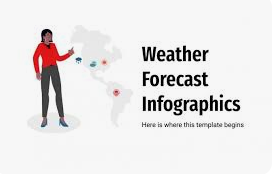1. Introduction to Insurance Quotes
In today’s complex financial landscape, understanding insurance quotes is crucial for both homeowners and vehicle owners. This comprehensive guide will walk you through the intricacies of homeowners and auto insurance quotes, empowering you to make informed decisions about protecting your valuable assets.
1.1 What are insurance quotes?
Insurance quotes are estimates provided by insurance companies that outline the potential cost and coverage details for a specific insurance policy. These quotes are based on information you provide about yourself, your property, or your vehicle, along with other factors that insurance companies consider when assessing risk.
For homeowners, an insurance quote typically includes estimates for coverage of the dwelling itself, personal property, liability protection, and additional living expenses. Auto insurance quotes, on the other hand, generally cover liability, collision, comprehensive coverage, and other optional protections.
1.2 Why are quotes important for homeowners and auto insurance?
Insurance quotes play a pivotal role in the decision-making process for several reasons:
- Cost comparison: Quotes allow you to compare prices from different insurance providers, ensuring you get the best value for your money.
- Coverage understanding: By reviewing multiple quotes, you can gain a better understanding of the types of coverage available and what each policy includes or excludes.
- Customization opportunities: Quotes provide a starting point for discussions with insurance agents, allowing you to tailor coverage to your specific needs.
- Budget planning: Accurate quotes help you plan your budget by giving you a clear idea of the costs associated with insuring your home or vehicle.
- Risk assessment: The quote process often involves answering questions about your property or driving habits, which can help you identify potential risks and take preventive measures.
1.3 How to use this guide
This comprehensive guide is designed to walk you through every aspect of homeowners and auto insurance quotes. Here’s how to make the most of the information provided:
- Read sequentially: The guide is structured to build your knowledge progressively. Start from the beginning and work your way through each section.
- Focus on relevant sections: If you’re primarily interested in either homeowners or auto insurance, pay special attention to the sections dedicated to that type of coverage.
- Take notes: Jot down important points, questions, or terms you’d like to research further.
- Use the FAQ sections: These address common questions and can help clarify any lingering doubts.
- Apply the knowledge: As you read, think about how the information applies to your specific situation and use it when obtaining and comparing real quotes.
- Revisit as needed: Insurance needs can change over time. Bookmark this guide and return to it whenever you need a refresher or are considering changes to your coverage.
By the end of this guide, you’ll be equipped with the knowledge to confidently navigate the world of homeowners and auto insurance quotes, ensuring that you and your assets are adequately protected without overpaying for coverage you don’t need.
2. Understanding Homeowners Insurance Quotes
Homeowners insurance is a crucial aspect of protecting what is likely your most valuable asset. Understanding the components of a homeowners insurance quote is essential for making an informed decision about your coverage.
2.1 Types of homeowners insurance policies
Before diving into the specifics of quotes, it’s important to understand that there are several types of homeowners insurance policies. The most common types include:
- HO-1 (Basic Form): This is the most basic policy, covering only specific perils listed in the policy. It’s rarely used today due to its limited coverage.
- HO-2 (Broad Form): This policy covers more perils than HO-1 but is still limited in scope.
- HO-3 (Special Form): The most common type of homeowners insurance, offering broad coverage for the structure and named perils for personal property.
- HO-4 (Renters Insurance): Designed for renters, this policy covers personal property and liability but not the structure itself.
- HO-5 (Comprehensive Form): This offers the broadest coverage, protecting against all perils unless specifically excluded.
- HO-6 (Condo Insurance): Tailored for condominium owners, covering personal property and the interior of the unit.
- HO-7 (Mobile Home Form): Similar to HO-3 but specifically for mobile or manufactured homes.
- HO-8 (Older Home Form): Designed for older homes, this policy offers coverage based on actual cash value rather than replacement cost.
When obtaining a homeowners insurance quote, the type of policy will significantly influence the coverage and cost.
2.2 Factors affecting homeowners insurance quotes
Insurance companies consider numerous factors when generating a homeowners insurance quote. Understanding these factors can help you anticipate costs and potentially find ways to lower your premiums:
- Location of the home: This includes the neighborhood, proximity to fire stations, and susceptibility to natural disasters.
- Age and condition of the home: Older homes or those in poor condition may be more expensive to insure.
- Construction type: The materials used to build your home can affect its resistance to damage.
- Home value: The cost to rebuild your home influences the coverage amount and premium.
- Security features: Burglar alarms, deadbolts, and smoke detectors can lower your premium.
- Claims history: Previous claims on the property or by the homeowner can increase premiums.
- Credit score: In many states, insurers use credit-based insurance scores to help determine premiums.
- Deductible amount: Higher deductibles generally result in lower premiums.
- Additional structures: Detached garages, sheds, or pools may require additional coverage.
- Personal property value: The worth of your belongings affects the personal property coverage needed.
2.3 How to read a homeowners insurance quote
A homeowners insurance quote can be complex, but understanding its components is crucial for making an informed decision.
2.3.1 Coverage types explained
A typical homeowners insurance quote will include the following coverage types:
- Dwelling coverage (Coverage A): This protects the structure of your home and attached structures like a garage.
- Other structures coverage (Coverage B): This covers detached structures on your property, such as sheds or fences.
- Personal property coverage (Coverage C): This protects your belongings inside the home.
- Loss of use coverage (Coverage D): This covers additional living expenses if your home becomes uninhabitable due to a covered loss.
- Personal liability coverage (Coverage E): This protects you if someone is injured on your property or you’re held responsible for damage to someone else’s property.
- Medical payments coverage (Coverage F): This covers medical expenses for minor injuries to guests on your property, regardless of fault.
2.3.2 Deductibles and premiums
Two key financial components of a homeowners insurance quote are the deductible and the premium:
- Deductible: This is the amount you’ll pay out of pocket before your insurance coverage kicks in. Quotes typically show options for different deductible amounts.
- Premium: This is the amount you’ll pay for your insurance policy, usually on an annual or monthly basis.
Generally, choosing a higher deductible will lower your premium, but it means you’ll pay more out of pocket if you need to file a claim.
2.3.3 Additional endorsements and riders
Homeowners insurance quotes may also include options for additional coverage through endorsements or riders:
- Flood insurance: Standard policies don’t cover flood damage, so this is often offered as a separate policy.
- Earthquake coverage: Like flood insurance, this is typically a separate policy or endorsement.
- Valuable items rider: This provides extra coverage for high-value items like jewelry or artwork.
- Home business endorsement: This covers business equipment and liability for home-based businesses.
- Identity theft protection: Some insurers offer coverage to help with expenses related to identity theft.
- Scheduled personal property: This provides itemized coverage for specific high-value possessions.
When reviewing a homeowners insurance quote, pay close attention to these additional options. They can provide valuable extra protection but will also increase your premium.
Understanding the various components of a homeowners insurance quote empowers you to make informed decisions about your coverage. By carefully reviewing each element, you can ensure that you’re getting the protection you need at a price you can afford.
3. Navigating Auto Insurance Quotes
Auto insurance is a critical component of responsible vehicle ownership. Understanding how to navigate auto insurance quotes can help you secure the right coverage at the best possible price.
3.1 Types of auto insurance coverage
Auto insurance policies typically offer several types of coverage. When reviewing quotes, you’ll often see the following options:
- Liability coverage: This is typically mandatory and covers damages you cause to others in an accident.
- Collision coverage: This pays for damage to your own vehicle resulting from a collision with another vehicle or object.
- Comprehensive coverage: This protects against non-collision-related damage, such as theft, vandalism, or natural disasters.
- Personal injury protection (PIP): This covers medical expenses and lost wages for you and your passengers, regardless of fault.
- Uninsured/underinsured motorist coverage: This protects you if you’re in an accident with a driver who has insufficient or no insurance.
- Medical payments coverage: Similar to PIP, this covers medical expenses for you and your passengers.
- Gap insurance: This covers the difference between your car’s actual cash value and what you owe on your auto loan if your car is totaled.
- Rental car coverage: This pays for a rental car while your vehicle is being repaired after a covered accident.
3.2 Factors influencing auto insurance quotes
Insurance companies consider numerous factors when calculating auto insurance quotes. Understanding these can help you anticipate costs and potentially find ways to lower your premiums:
- Driving record: Your history of accidents, tickets, and claims significantly impacts your rates.
- Age and driving experience: Younger, less experienced drivers typically pay higher premiums.
- Vehicle make and model: The cost to repair or replace your car affects your insurance rates.
- Annual mileage: The more you drive, the higher your risk of an accident, which can increase your premium.
- Location: Where you live and park your car influences your rates due to varying risks of accidents, theft, and vandalism.
- Credit score: In many states, insurers use credit-based insurance scores to help determine premiums.
- Coverage levels and deductibles: Higher coverage limits and lower deductibles generally result in higher premiums.
- Occupation: Some professions are associated with lower risk and may qualify for discounts.
- Marital status: Married individuals often receive lower rates than single people.
- Insurance history: Continuous coverage without lapses can lead to better rates.
3.3 Decoding an auto insurance quote
Auto insurance quotes can be complex, but understanding their components is crucial for making an informed decision.
3.3.1 Liability coverage
Liability coverage is typically expressed as three numbers, such as 100/300/100. This means:
- $100,000 bodily injury liability per person
- $300,000 bodily injury liability per accident
- $100,000 property damage liability per accident
When reviewing quotes, consider whether the liability limits are sufficient to protect your assets in case of a serious accident.
3.3.2 Collision and comprehensive coverage
For collision and comprehensive coverage, the quote will typically show:
- The deductible amount (e.g., $500 or $1000)
- The coverage limit (often the actual cash value of your vehicle)
Consider how much you can afford to pay out of pocket in case of an accident when choosing your deductible.
3.3.3 Additional options and discounts
Auto insurance quotes often include various additional options and potential discounts:
- Roadside assistance: This covers services like towing, jump-starts, and tire changes.
- Accident forgiveness: This prevents your rates from increasing after your first at-fault accident.
- Usage-based insurance: These programs use telematics to monitor your driving habits and potentially offer discounts for safe driving.
- Multi-policy discount: You may get a discount for bundling auto insurance with other policies like homeowners insurance.
- Safe driver discount: Many insurers offer lower rates for drivers with clean records.
- Good student discount: Students with good grades may qualify for reduced rates.
- Vehicle safety feature discounts: Cars with advanced safety features may qualify for lower premiums.
When comparing quotes, pay attention to these additional options and discounts. They can significantly affect your overall cost and the value you receive from your policy.
By understanding the components of an auto insurance quote, you can make more informed decisions about your coverage. Remember to compare quotes from multiple insurers and ask questions about any terms or options you don’t understand. This will help ensure you get the right coverage at a competitive price.
4. Comparing Homeowners and Auto Insurance Quotes
While homeowners and auto insurance serve different purposes, there are notable similarities and differences in how their quotes are structured and what factors influence them. Understanding these can help you make more informed decisions when insuring your property and vehicles.
4.1 Similarities between homeowners and auto insurance quotes
Despite covering different types of assets, homeowners and auto insurance quotes share several common elements:
- Liability coverage: Both types of insurance offer protection against legal liability for damage or injury you may cause to others.
- Property protection: Whether it’s your home or your car, both policies provide coverage for damage to your property.
- Deductibles and premiums: Both quote types will specify the amount you’ll pay out of pocket (deductible) and the cost of the policy (premium).
- Additional coverage options: Both often offer endorsements or riders for extra protection beyond the standard policy.
- Influence of location: Where you live affects both homeowners and auto insurance rates due to varying risks associated with different areas.
- Claims history impact: Your history of filing claims can influence the rates for both types of insurance.
- Credit score consideration: In many states, insurers use credit-based insurance scores to help determine premiums for both types of policies.
4.2 Key differences to note
While there are similarities, there are also significant differences between homeowners and auto insurance quotes:
- Coverage scope:
- Homeowners insurance typically covers the structure, personal property, liability, and additional living expenses.
- Auto insurance focuses on the vehicle, liability for accidents, and optional personal injury protection.
- Policy terms:
- Homeowners insurance is usually an annual policy.
- Auto insurance can often be purchased for six-month terms, though annual policies are also common.
- Factors affecting rates:
- Homeowners insurance considers factors like home age, construction type, and proximity to fire stations.
- Auto insurance looks at factors such as driving record, vehicle make and model, and annual mileage.
- Required coverage:
- Homeowners insurance is typically required by mortgage lenders but not by law.
- Auto insurance is legally required in most states, at least for liability coverage.
- Depreciation consideration:
- Homeowners insurance often offers replacement cost coverage for personal property.
- Auto insurance typically factors in depreciation, offering actual cash value for the vehicle.
- Natural disaster coverage:
- Homeowners insurance may exclude certain natural disasters like floods or earthquakes, requiring separate policies.
- Auto insurance comprehensive coverage typically includes most natural disasters.
4.3 Benefits of bundling homeowners and auto insurance
Many insurance companies offer the option to bundle homeowners and auto insurance policies. This can provide several advantages:
- Cost savings: Bundling often comes with a significant multi-policy discount, potentially saving you 10-25% on your premiums.
- Simplified management: Having both policies with one insurer can make it easier to manage your insurance, with one point of contact and potentially a single bill.
- Consistent coverage: Bundling can help ensure there are no gaps in coverage between your policies.
- Single deductible benefit: Some insurers offer a single deductible for events that affect both your home and auto, such as a tree falling on your house and car.
- Increased loyalty benefits: Insurers often provide additional perks or discounts to customers who bundle multiple policies.
When comparing quotes, it’s worth considering bundled options alongside standalone policies to see which provides the best overall value for your situation.
Understanding the similarities and differences between homeowners and auto insurance quotes can help you navigate the insurance landscape more effectively. While the specifics of what’s being insured differ, the fundamental principles of risk assessment and coverage remain consistent across both types of insurance. By leveraging this knowledge, you can make more informed decisions about your insurance needs and potentially find ways to optimize your coverage while managing costs.




